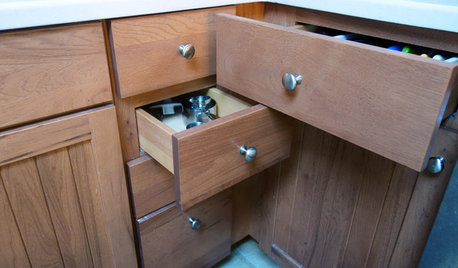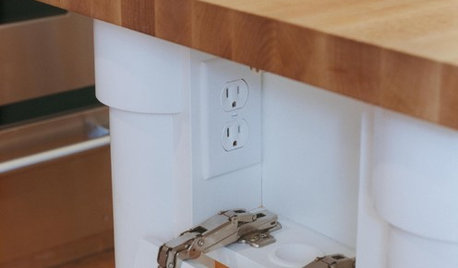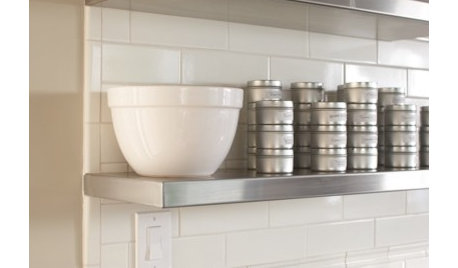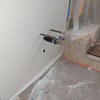Does sound like a normal sink trap clean-out plug?
la_koala
12 years ago
Related Stories

HOUSEKEEPINGHow to Clean Your Fridge, Inside and Out
Keep your refrigerator clean and fresh, while you gain storage space and lose those ‘UFOs’
Full Story
REMODELING GUIDESBathroom Workbook: How Much Does a Bathroom Remodel Cost?
Learn what features to expect for $3,000 to $100,000-plus, to help you plan your bathroom remodel
Full Story
HOUSEKEEPINGWhat's That Sound? 9 Home Noises and How to Fix Them
Bumps and thumps might be driving you crazy, but they also might mean big trouble. We give you the lowdown and which pro to call for help
Full Story
FUN HOUZZ10 Truly Irritating Things Your Partner Does in the Kitchen
Dirty dishes, food scraps in the sink — will the madness ever stop?
Full Story
SELLING YOUR HOUSE9 Tips for Living a (Semi-)Normal Life While Your Home Is Being Shown
Preparation, routine and treats help you make the house you’re selling presentable at a moment’s notice
Full Story
INSIDE HOUZZHow Much Does a Remodel Cost, and How Long Does It Take?
The 2016 Houzz & Home survey asked 120,000 Houzzers about their renovation projects. Here’s what they said
Full Story
LIFEWe Can Work It Out: Living (and Cleaning) Together
Run a household without fussing and fighting with these ideas for how to work together on household chores
Full Story
GREEN BUILDINGOff the Grid: Ready to Pull the Plug on City Power?
What to consider if you want to stop relying on public utilities — or just have a more energy-efficient home
Full Story
KITCHEN DESIGNHow to Hide Those Plugs and Switches
5 ways to camouflage your outlets — or just make them disappear
Full Story
KITCHEN DESIGNHow Much Does a Kitchen Makeover Cost?
See what upgrades you can expect in 3 budget ranges, from basic swap-outs to full-on overhauls
Full StoryMore Discussions








la_koalaOriginal Author
la_koalaOriginal Author
Related Professionals
93927 Kitchen & Bathroom Remodelers · Champlin Kitchen & Bathroom Remodelers · Fort Pierce Kitchen & Bathroom Remodelers · Hanover Township Kitchen & Bathroom Remodelers · Lynn Haven Kitchen & Bathroom Remodelers · Panama City Kitchen & Bathroom Remodelers · Port Arthur Kitchen & Bathroom Remodelers · Pueblo Kitchen & Bathroom Remodelers · Rancho Palos Verdes Kitchen & Bathroom Remodelers · South Park Township Kitchen & Bathroom Remodelers · Tulsa Kitchen & Bathroom Remodelers · Gibsonton Kitchen & Bathroom Remodelers · Westminster Kitchen & Bathroom Remodelers · Sharonville Kitchen & Bathroom Remodelers · Ojus Kitchen & Bath Fixturesbrickeyee
lazypup
brickeyee
lazypup
brickeyee
lazypup
la_koalaOriginal Author